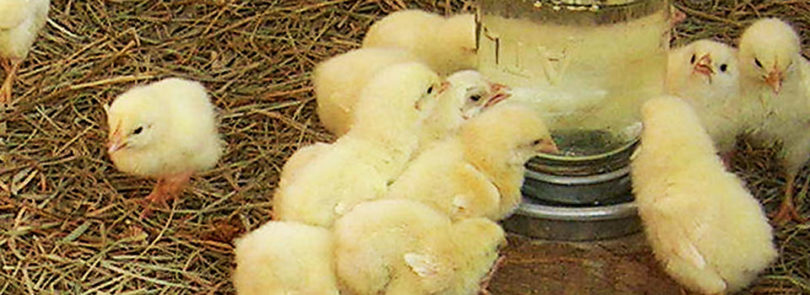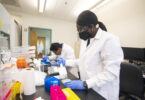A surprising finding by a team of University of Georgia scientists suggests that curbing the use of antibiotics on poultry farms will do little – if anything – to reduce rates of antibiotic resistant bacteria that have the potential to threaten human health.
Dr. Margie Lee, professor in the UGA College of Veterinary Medicine, and her colleagues have found that chickens raised on antibiotic-free farms and even those raised under pristine laboratory conditions have high levels of bacteria that are resistant to common antibiotics. Her findings, published in the March issue of the journal Applied and Environmental Microbiology, suggest that poultry come to the farm harboring resistant bacteria, possibly acquired as they were developing in their eggs.
“The resistances don’t necessarily come from antibiotic use in the birds that we eat,” Lee said, “so banning antibiotic use on the farm isn’t going to help. You have to put in some work before that.”
They found that even birds raised in the pristine laboratory conditions had levels of antibiotic resistance levels comparable to what was seen on farms that used antibiotics. Even when the levels were lower, Lee adds, they were still well above the reasonable comfort zone for antibiotic resistance – roughly five to 10 percent.
Seventy-three percent of the bacteria from one flock in the antibiotic-free commercial group were resistant to the drug oxytetracycline, for example, while 90 percent were resistant to the drug in a commercial flock that used antibiotics. Ninety-seven percent were resistant in the experimental flock that was given antibiotics, while forty-seven percent were resistant in the experimental group that was not given antibiotics.
Strikingly, they even found bacteria resistant to streptomycin, a common human antibiotic that is rarely used in poultry and was not used on the farms the researchers studied.
Bacteria swap genes relatively easily, and Lee explained that the concern is that drug resistance genes from bacteria that infect poultry could be passed on to bacteria that cause human illness. With these resistance genes, human bacterial illness could become harder to treat.
In previous studies, Lee has tried to recreate experimentally conditions that should lead to the swapping of resistance genes among bacteria. Lee said these events – known as the horizontal transfer of genes – do occur, but they may not be as common as initially thought.
What may be driving the antibiotic resistance that Lee has observed in her studies is what’s known as vertical transfer – from parent to child – of bacteria carrying resistance genes. In short, the birds may come to the farm harboring antibiotic resistant bacteria.
“This issue of antibiotic resistance is more complicated than once thought,” Lee said. “These findings suggest that banning antibiotics at the farm level may not be as effective as assumed. We need further studies to identify which management practice would be effective”








